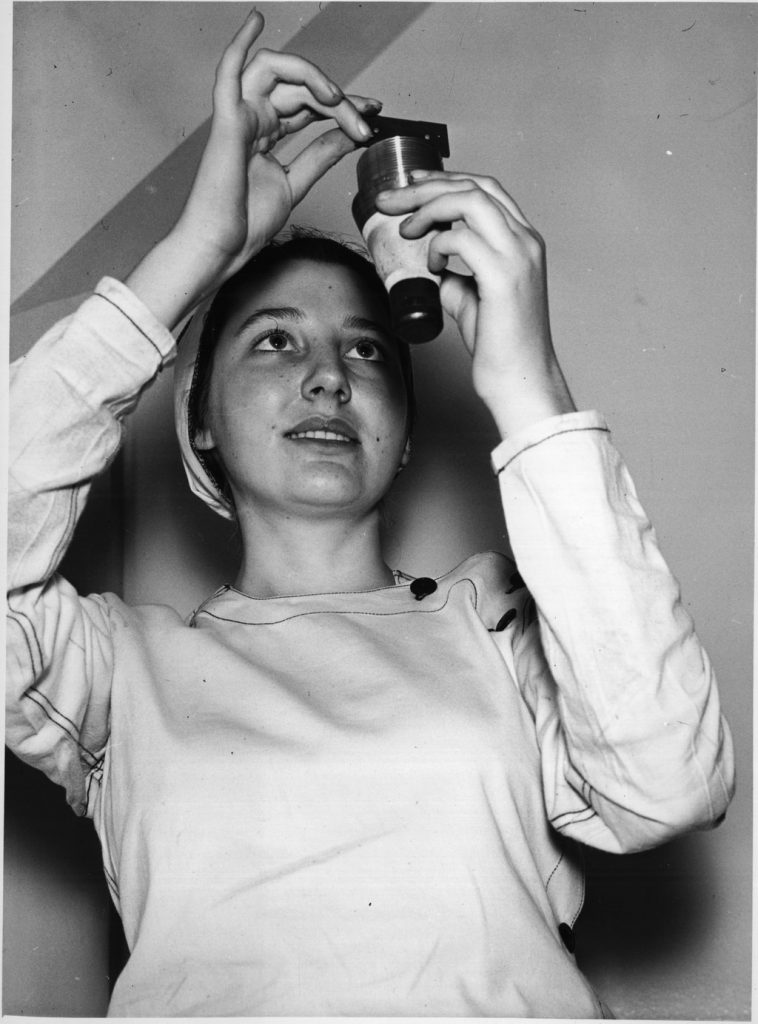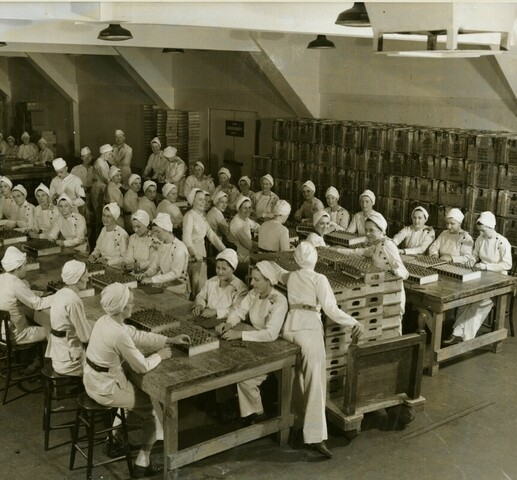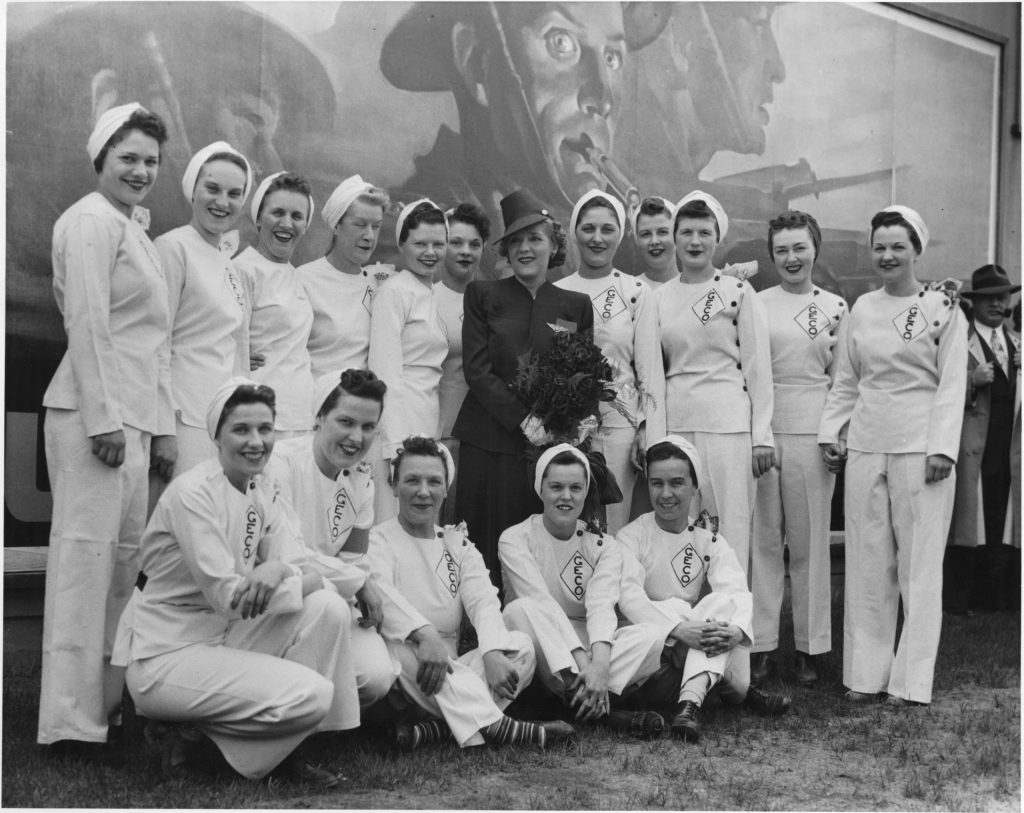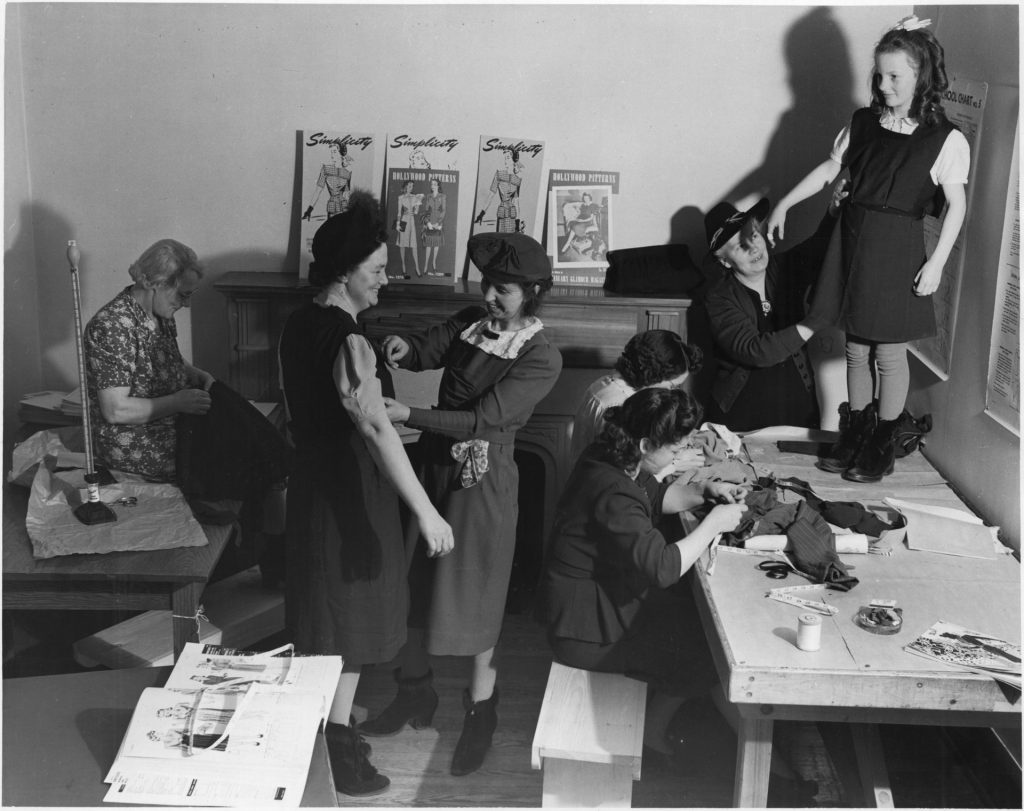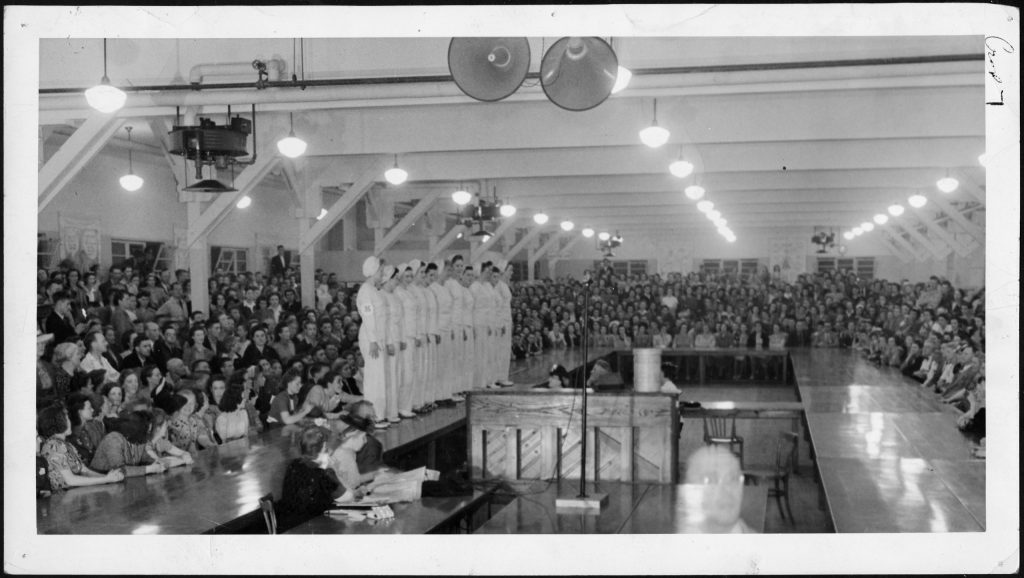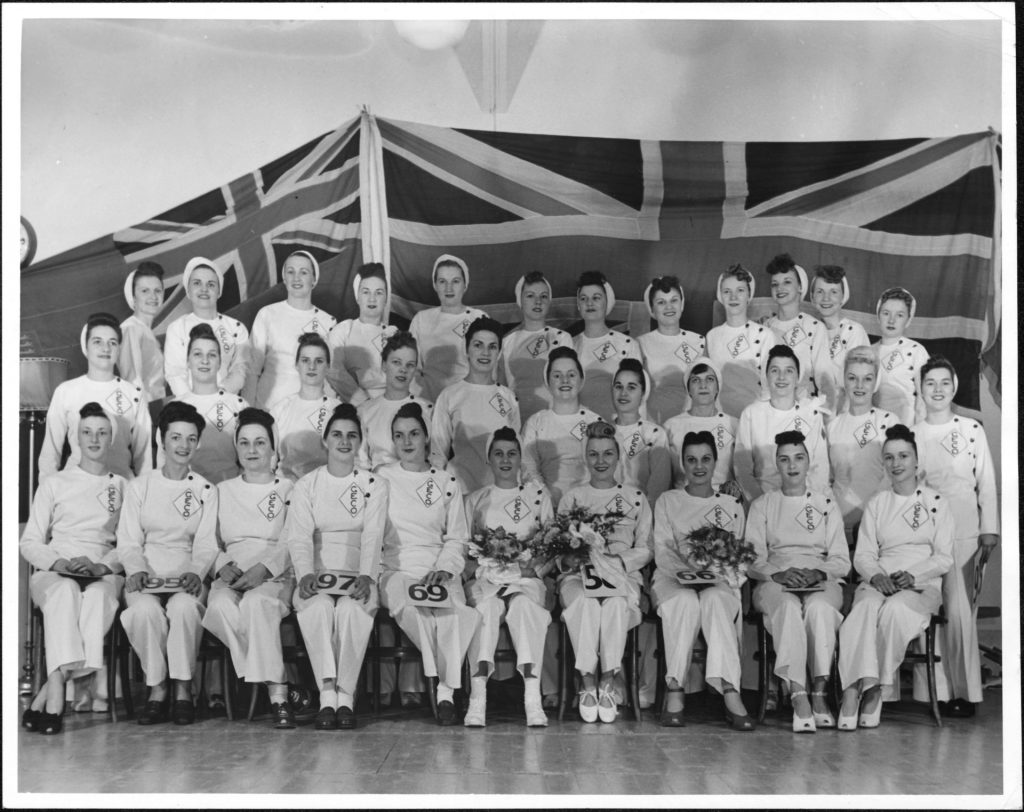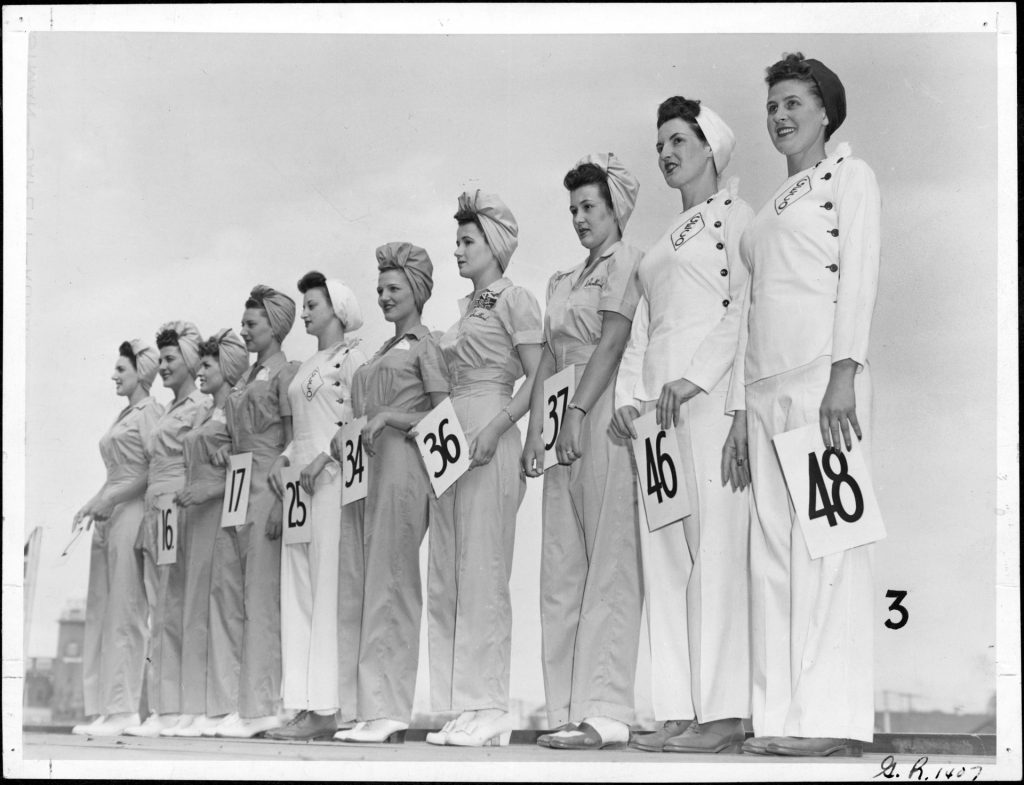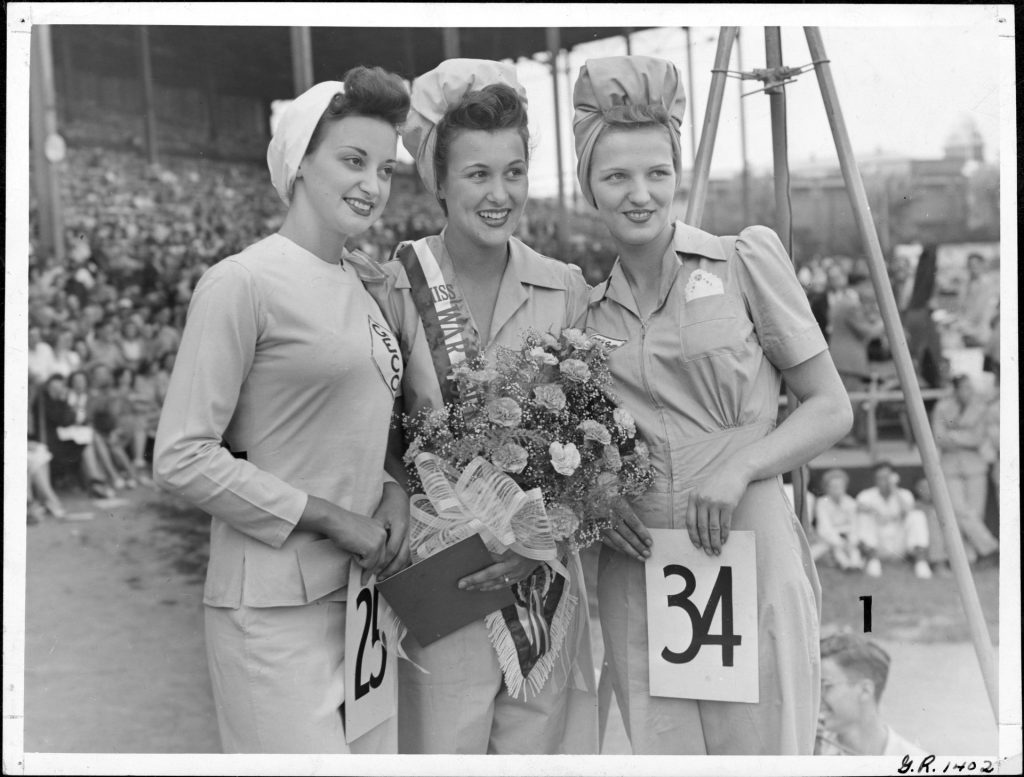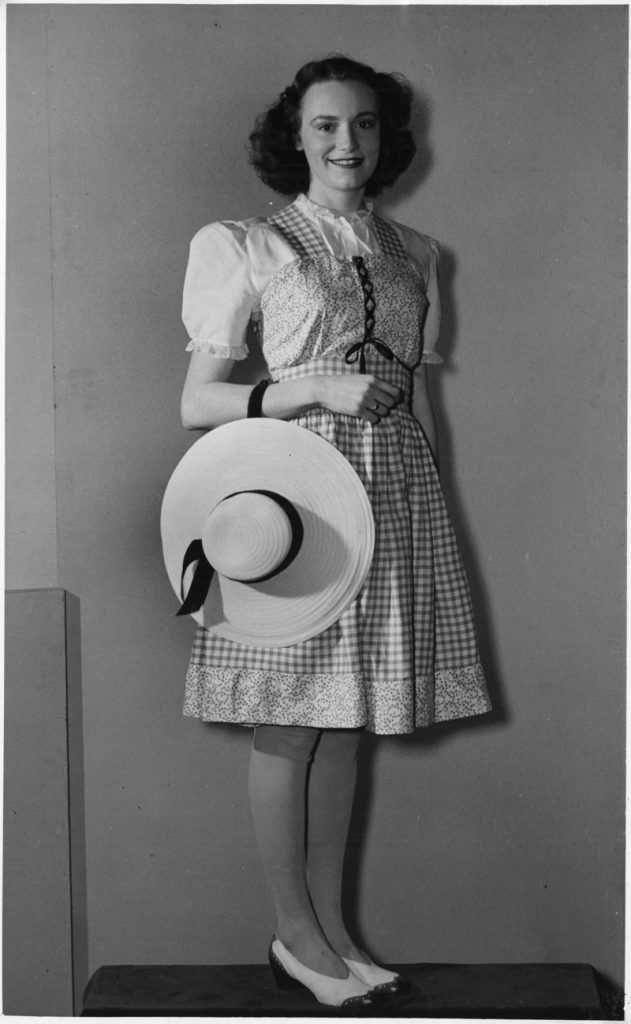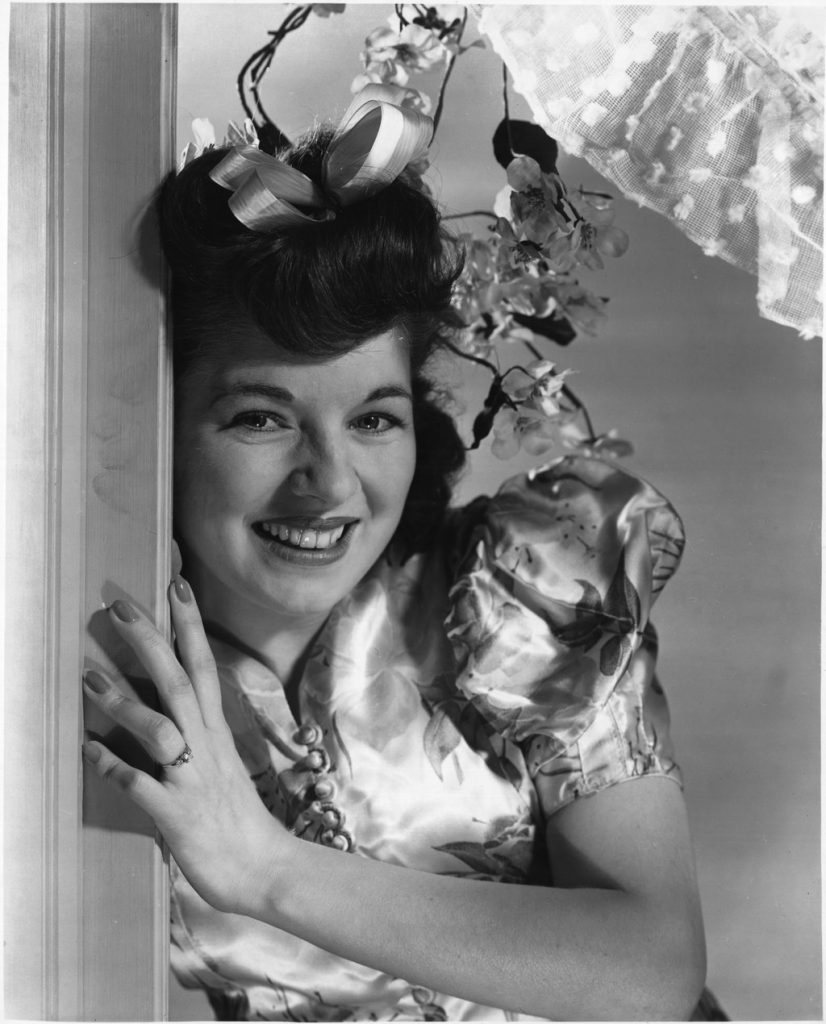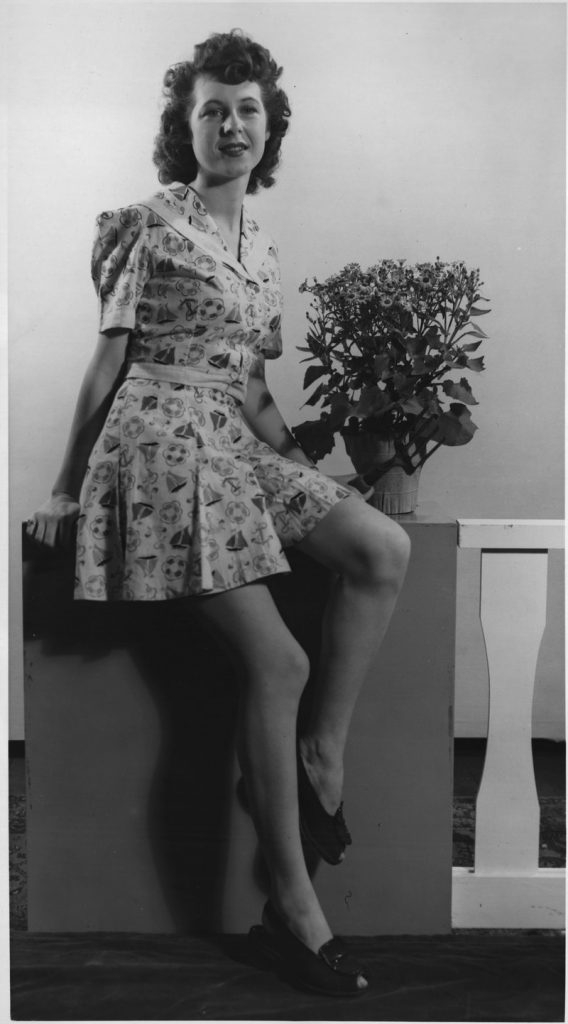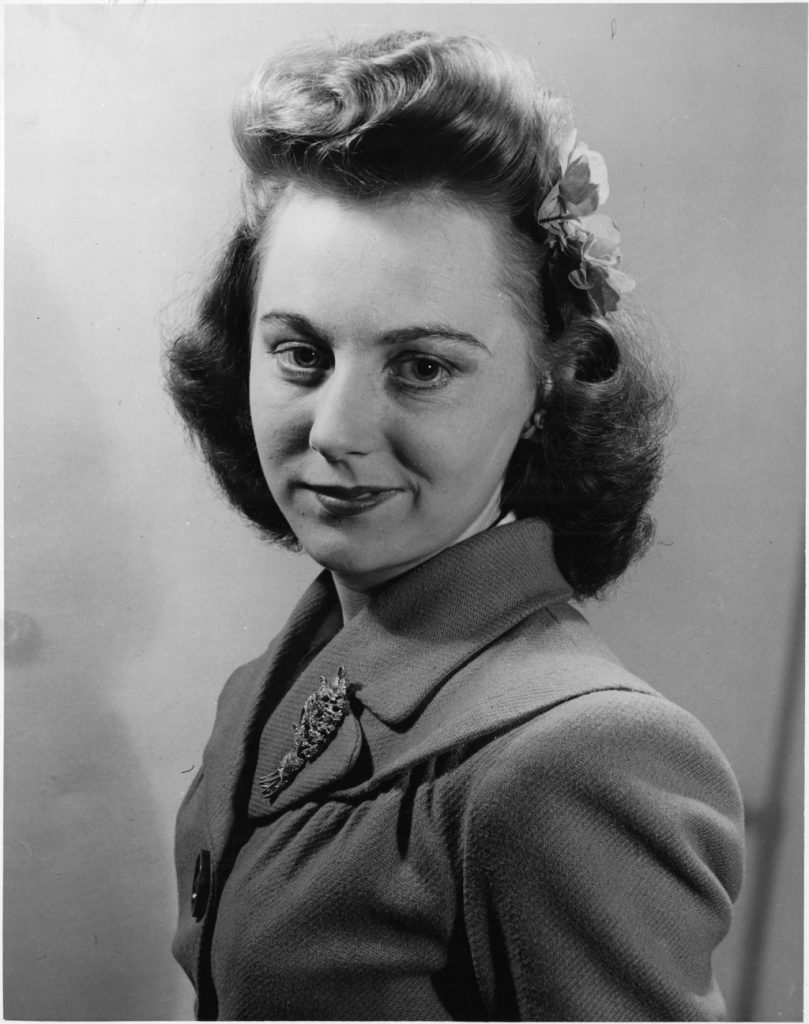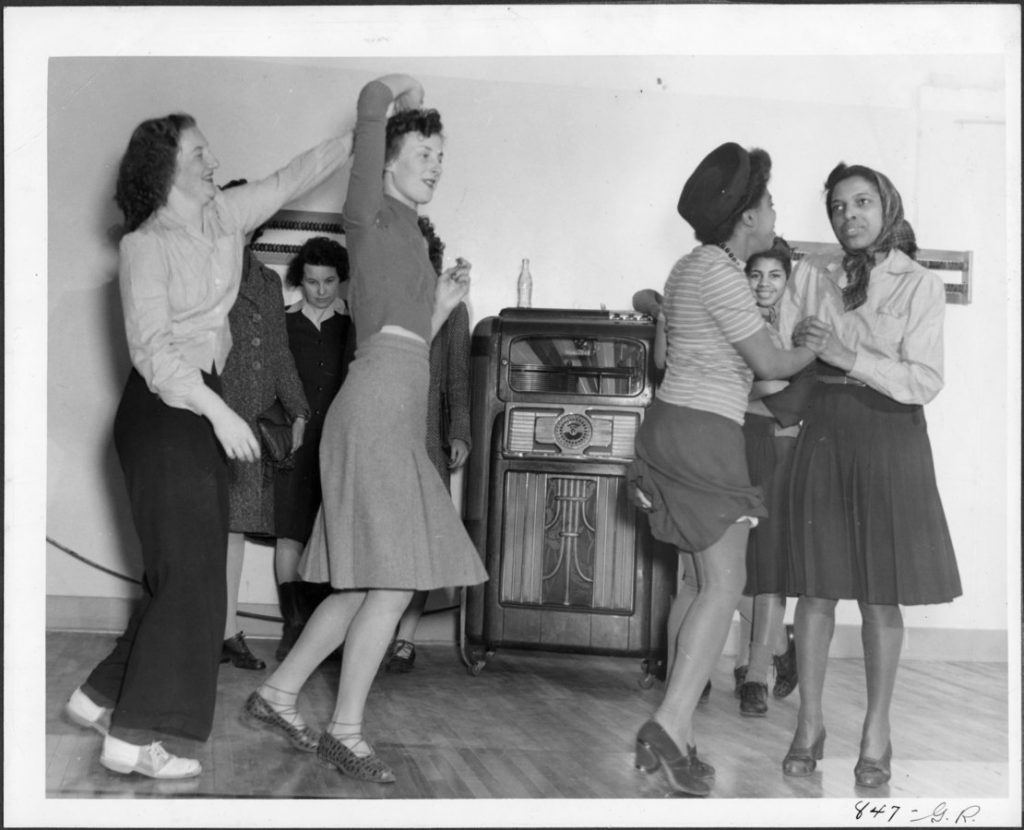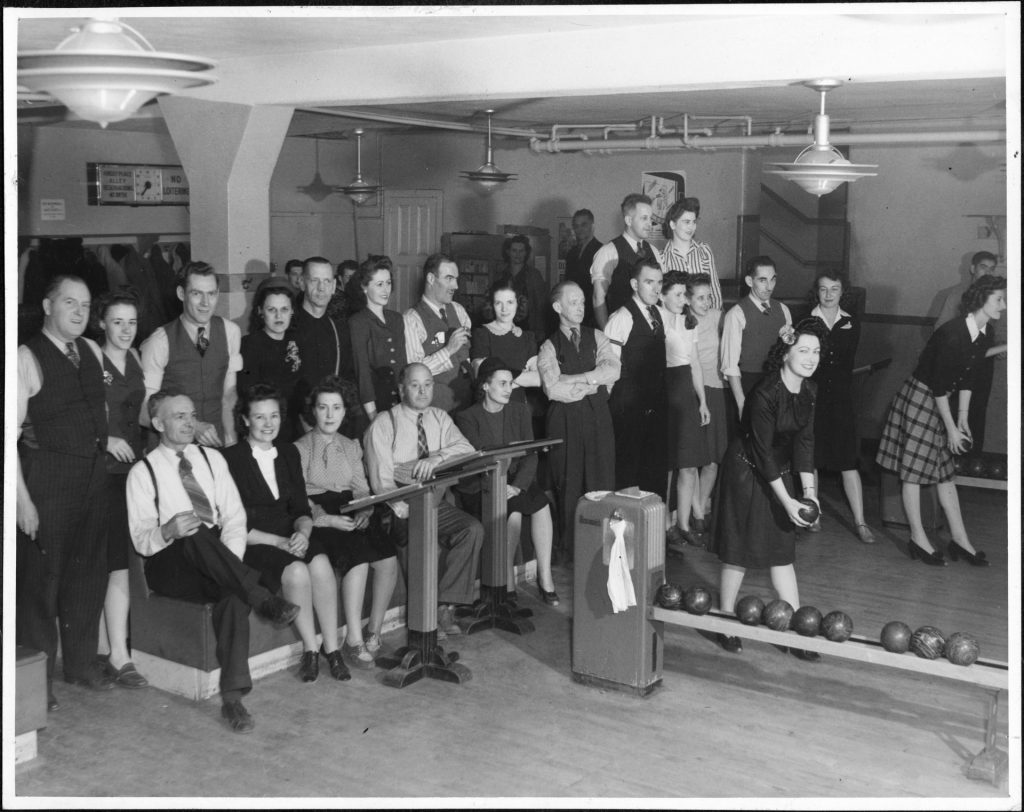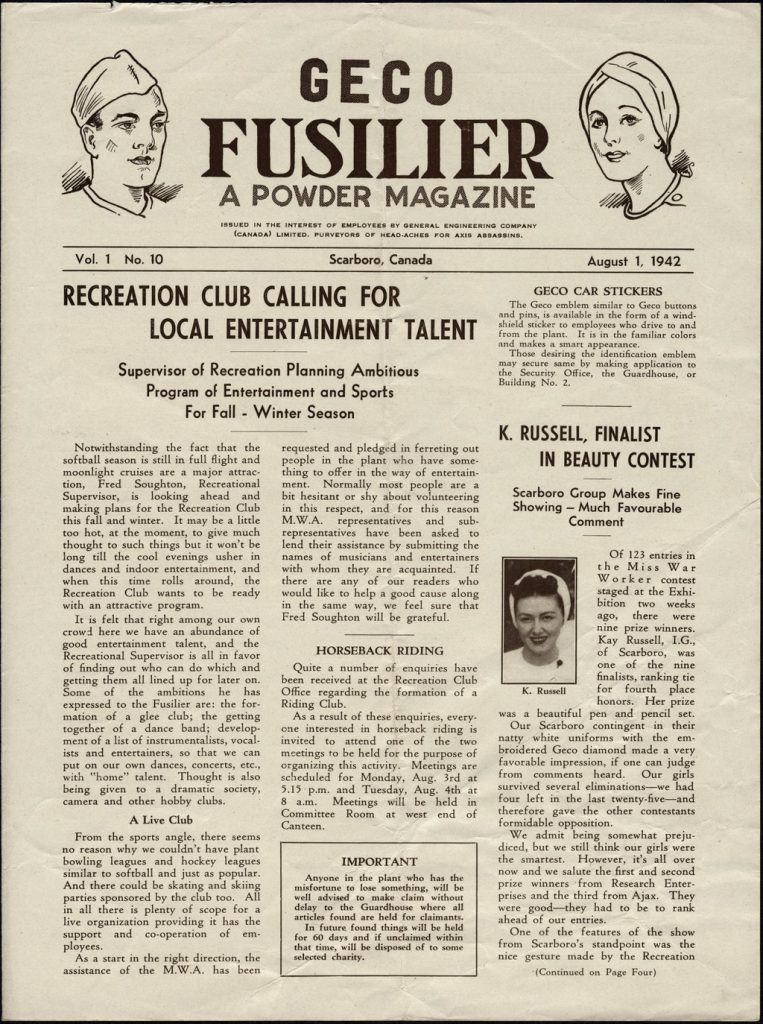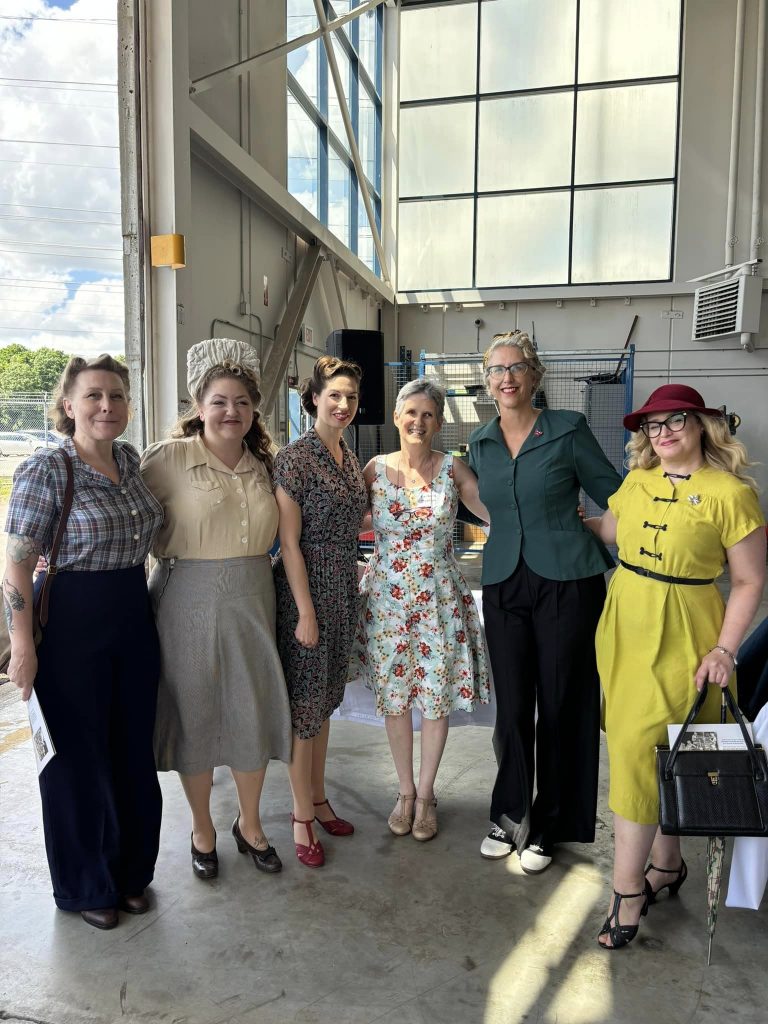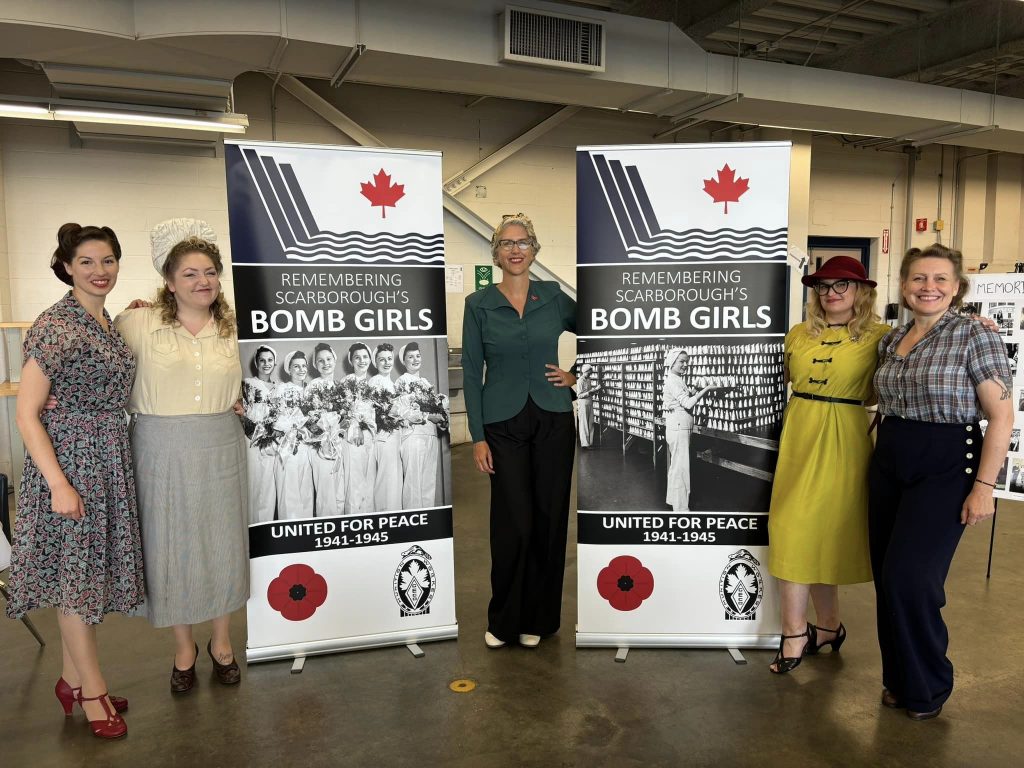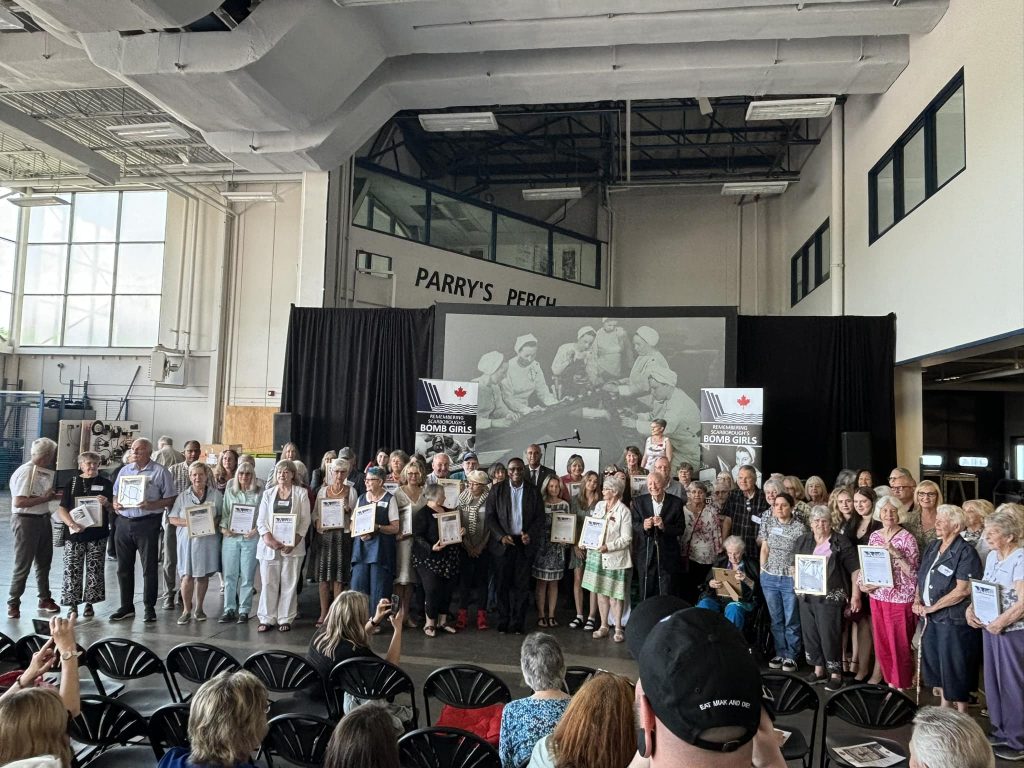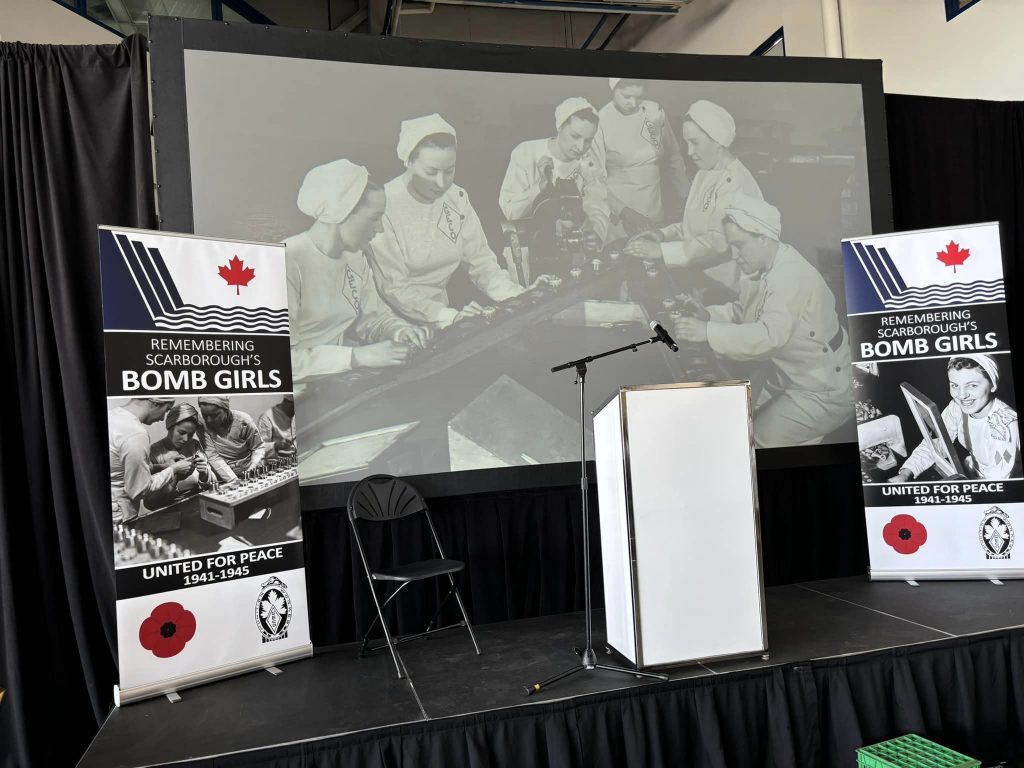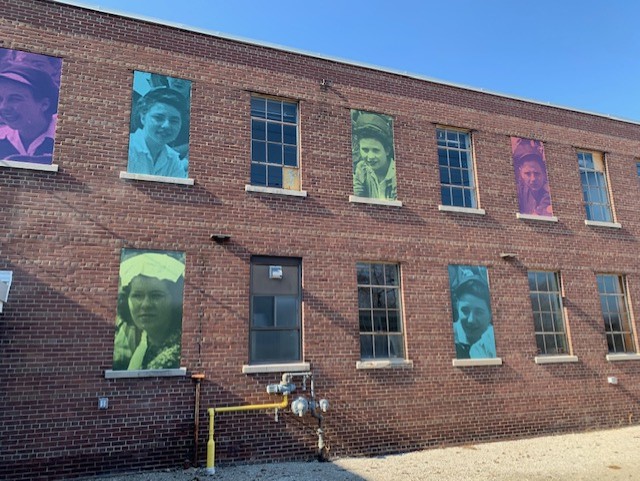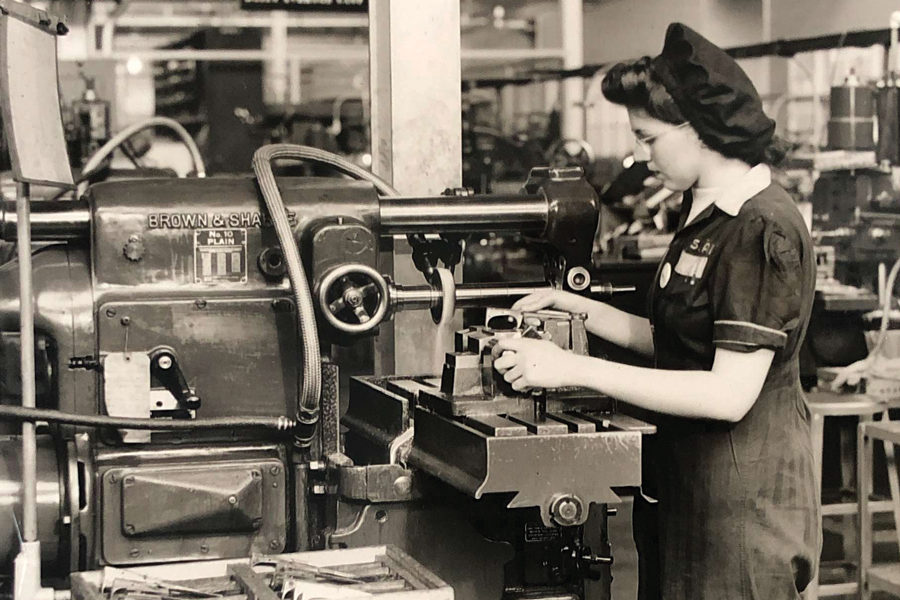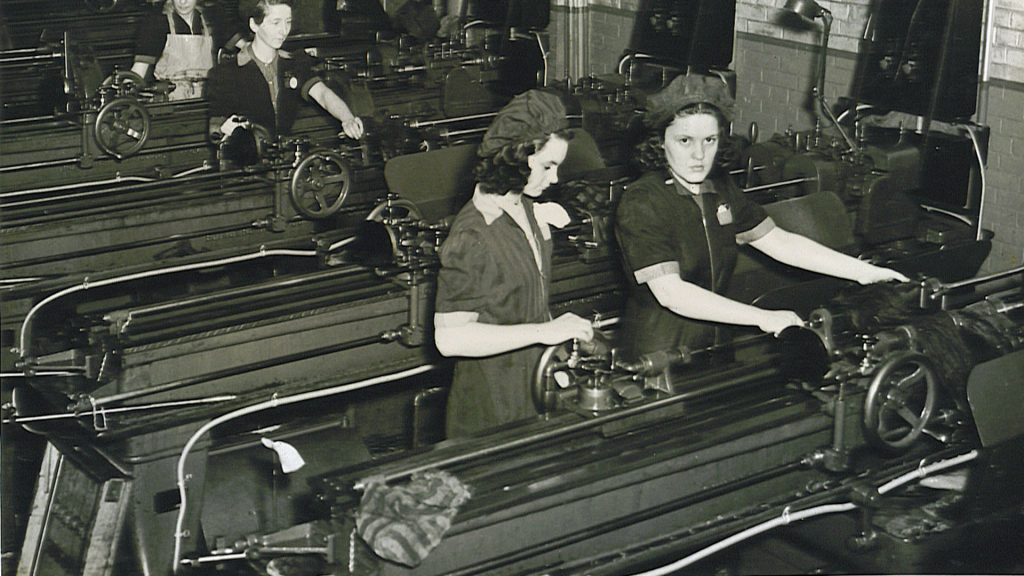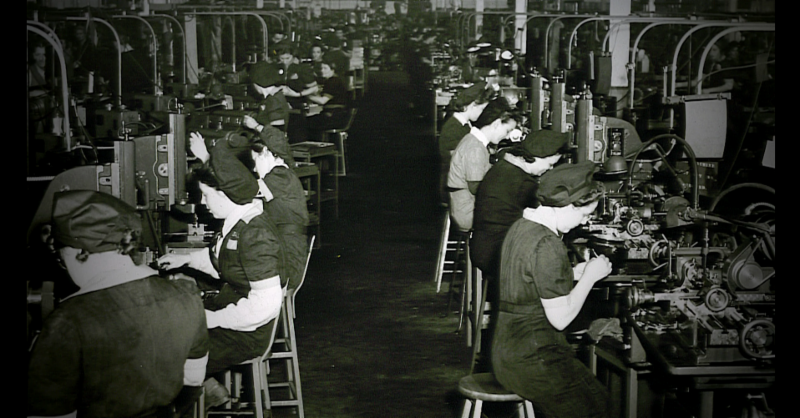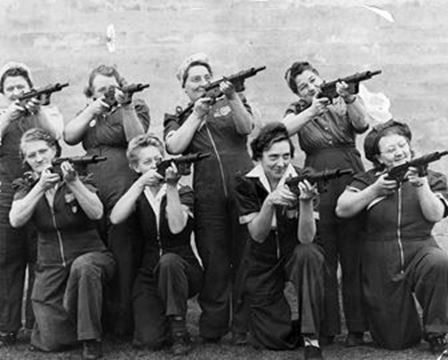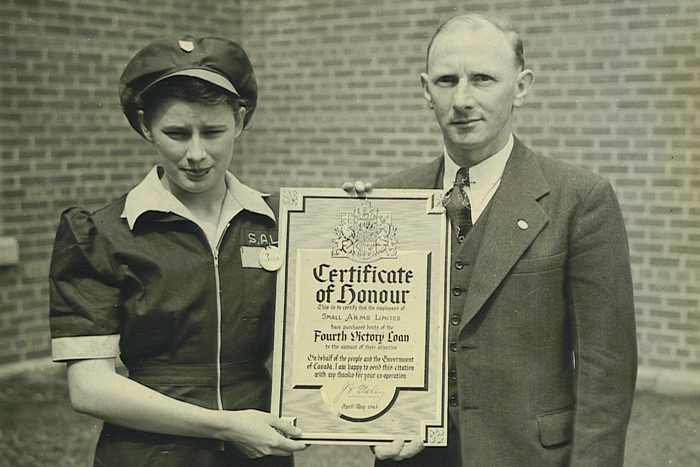GECO (General Engineering Company of Canada)–Canada’s biggest WWII munitions plant — which employed over 21,000 Canadians, predominantly women courageously working with high explosives around the clock (Source).
Note: Scarborough for those who are not from Ontario is just East of Toronto and is part of the GTA (Greater Toronto Area). By car it would take me around 30-40 mins to get to their location from my home.
Liz June 2024 Update: I recently attended an event with other Toronto Vintage Society ladies, for the Bomb Girls Legacy Foundation as they unveiled memorial banners that will will fly along Eglinton Avenue East between Warden and Pharmacy Avenues. It was fantastic! Scroll to the end to see some of the photos from the day.

The Bomb Girls Of Scarborough, Ontario Canada
High Level Summary of Life at GECO
1943 photo of a woman measuring piece of munitions at the General Engineering Company. Source: Archives of Ontario
GECO was a shell filling factory – empty shells were sent to GECO, and its workers would have the dangerous task of turning them into explosives, and shipping them overseas. The workforce comprised mainly young women with no factory experience, and at times, no work experience at all. Dubbed “Munitionettes,” “Fusiliers,” or “Bomb Girls”, they had a half day’s training and took a secrecy oath before being put to work.
An estimated 21,000 people worked at the factory during its four years of operation, creating a unique community. The company had its own newspaper, called the GECO Fusilier, and for $1 a year workers could join the GECOcites Recreation Club which hosted softball games and built a mini-putt green and a lawn bowling area. There were sold out monthly dances, Victory bond drives and gardens, talent shows, and bingo was so popular that they had to stagger seatings. Workers took breaks in a massive 2000 seat cafeteria where the kitchen served 3000 meals a day, and an annual Christmas dinner of 400 turkeys. With the help of a Canadian Government incentive, the factory even provided childcare for working mothers (Source).
Some of what we are going to see today, includes pages from the factory newspaper, “GECO Fusilier.” In addition to photographs of women working with munitions, there are pictures of leisure activities in the 1940s, wartime nurseries, clothing recycling during WWII, fashion of the era, pin-up girls, and beauty pageants.
Special thank you to the Archives of Ontario for uploading this fantastic images! Can’t wait to see more.
Let’s see what life was like at GECO!
Vintage Photos of 1940’s Life at GECO
Clothing salvage centre at the GECO munitions factory-1943. I love the 1940s fashions in this photo! From the hats, the dresses, the little girls dress to the Simplicity sewing patterns on the mantel, it’s all wonderful!
Two adorable children at the war time nursery-1943.
Having a daycare / nursery was a must at GECO with nobody at home to watch the children.
A young girl all dressed up playing the accordion for the kids in the nursery -1943. I love accordions so I just had to add it!
“Miss War Worker GECO Finals” (to pick the ladies who will go into the main competition)-1942.
ABOUT: On July 18, 1942, more than 100 contestants from Canada’s major military manufacturing plants vied for the title of “Miss War Worker.” The winner, Dorothy Linham, starred in a Palmolive Soap advertisement (Source). The purpose was to keep spirits up and let everyone have a bit of fun.
Further Reading: Vintage Canadian Beauty Pageants
Group photo of the GECO Miss War Worker Content Contestants-1942.
Let the Miss War Worker Contest Begin! Go GECO!
The Final 3 of the Miss War Worker 1942 Contest. GECO made it into the Top 3. Yay!
YOOZA!!!! Who knew that factory uniforms could look so darn fantastic?!
Our ladies of GECO posed for Pinup photos in 1943. Here are some of the images…
I just found out about a month ago that the lovely lady posing below, is the mother of one of my swing dancing friends! How cool!
Fans of 1940s Hairstyles will love our GECO lady with the hair flower (I know I do!).
Further Reading: A Vintage Guide to 1940s Hair Accessories
1940s Vintage of a group of integrated ladies swing dancing together by the Jukebox in 1940s fashions (spot the Saddle Shoes!!).
Fun at the Bowling Alley! So many wonderful 1940s hairstyles on display.
What a great group of photos! Now here a few pages from the GECO company magazine, “Fusilier Magazine”- Vol. 1 No. 2 Cover (April 11th, 1942).
Here is the article from the Fusilier (August 1, 1942) on K. Russel from GECO who made it into the finals ouf the Miss War Worker contest. She tied for 4th and received a beautiful pen and pencil set. Congrats! See more magazine pages at the Archives of Ontario HERE.
For a longer history lesson of the women of GECO, I will encourage you to read Barbara Dickson book (& visit her website) “Bomb Girls–Trading Aprons for Ammo“. Barbara has interviewed many women that worked at this plant and documented their stories and images. Its a fantastic read!
If you are on Facebook, check out the page “Bomb Girls of Scarborough“. It’s also a gold mine of fantastic images and stories of these amazing women keeping the boys overseas safe while doing their work for the WW2 Homefront.
Share what your favorite photos were in the comment section below.
June 2024 Bomb Girls of Scarborough event:
As mentioned at the start of this post, I recently attended an event in Scarborough to unveil memorial banners that will fly in Scarborough around where GECO was. It was a super event where we saw videos and photos of these amazing women and men and even met a living Bomb Girl (102)! More to come on the foundation but in the meantime enjoy these photos from that day.
This is the families of some of the Canadian women and men who worked at the GECO plant making ammunition during WW2. There is even ONE ORIGINAL BOMB GIRL in the front row (in the wheelchair & image below with the cake).
FURTHER READING:
Thanks for dropping by!
Liz

